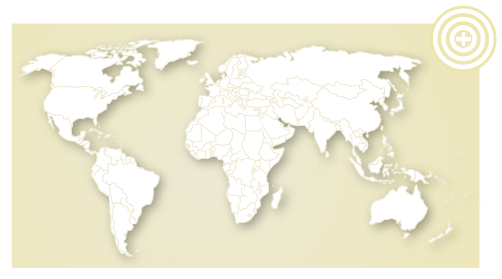Treatment Successes
Treatment of cancer patients has improved remarkably since the 1970s, with major advances in survival for some types of cancer: childhood leukaemia, testicular and breast cancers being notable successes. These initial gains were made, of course, without reference to the sequencing of the human genome and its malignant corollaries. For other cancers progress has been dismally poor. Some of these failures could be overcome as we enter the new era of precision medicine (Collins and Varmus 2015), but identifying the potential therapeutic targets and developing the drugs may be a long, complicated and costly process.
Early examples of success in precision medicine are the targeted treatments for breast and stomach cancers overexpressing the HER2 protein, drugs directed at the altered forms of BRAF protein present in some melanomas and the treatments targeting the BCR-ABL fusion protein in chronic myeloid leukaemia. These therapeutic advances are undoubted triumphs of science and medicine and they merit celebration. And yet there is a disturbing truth to face if the cancer problem is to be controlled, particularly from a societal and global perspective: the number of cancer patients is set to increase and to do so markedly in the coming decades. This is a direct consequence of increasing population size and lengthening lifespan in a majority of countries. As a disease predominantly of ageing, cancer will become more common. There will be more people to treat and to care for — a lot more.
Just 20 years from now, in 2035, there will be an estimated 9 million more people worldwide every year facing a cancer diagnosis: 24 million compared to 15 million today (Stewart and Wild 2014). These projections will be modulated by any alterations in the underlying cancer incidence rates, which depend in turn on changes in the prevalence and level of exposure to risk factors. Overall, the increase in absolute number of cases will place an unprecedented burden on cancer services, presenting a challenge to their sustainability, and resulting in an unmanageable demand in many countries. This is particularly true in the developing world where there is the least capacity to treat and care for patients even at today’s levels, let alone those twenty years hence.
The View Ahead
Future planning of cancer service provision must be an integral part of cancer control programmes and despite the challenges for developing countries, significant progress can be made through improved access to effective and affordable treatments (Kingham et al. 2013). Nevertheless, improving access to existing therapies will be an insufficient response for any country. The combination of increased numbers of patients and the spiralling costs of treatment mean that even the richest countries cannot treat their way out of the cancer problem. Global estimates of the cost of cancer are fraught with uncertainties, but lost productivity and treatment costs amounted to over 1 trillion US dollars (>0.9 trillion Euros) in one assessment for 2010 (Knaul et al. 2014). Among the developing countries, the problem risks being overwhelming. Uganda, for example, will see the annual number of new cases rise from around 33,000 to 70,000 between 2015 and 2035. Progress is being made in cancer services, such as those at the Uganda Cancer Institute — with 80 beds for inpatients and a new outpatient facility having the capacity to treat up to 20,000 patients annually. Many countries in Africa are less advanced in planning, often completely lacking specialised cancer surgery, pathology and radiotherapy services. On a more intimate level, among the world's poorest, the out-of-pocket expenses of treatment for one individual can be financially catastrophic for an extended family (ACTION Study group 2015).
How did we end up here and what might be done better? The late Denis Burkitt used to present one of his illustrations in two stages. First the lower portion of the slide drew an analogy between mopping water and treating disease — showing two men trying to cope with a huge pool of spreading water — emphasising the never-ending nature of the task and Burkitt’s own long years as a dedicated 'mopper'. He would then reveal the full slide, with an overflowing sink above the men’s heads, taps fully-open, and relate how one day he was struck by the simple question: “Why not turn off the tap?” Burkitt became a great proponent of prevention, conducting the classic geographic pathology studies on the viral aetiology of Burkitt lymphoma. It is sometimes overlooked, however, that he also developed an effective treatment for this childhood tumour. As a surgeon and nascent epidemiologist, Burkitt’s thinking was towards an integrated approach of aetiology, prevention and treatment. It might be argued that collectively
the cancer community has failed to embrace the Burkitt message about the core role for prevention, at least not in terms of prioritised action on a wide scale. We have improved the design of our mops, but forgotten about the tap. Maybe the time is ripe for change.
Focus on Prevention
Figures vary, but one can safely estimate that 40 to 50 percent of cancers could be prevented if the accumulated knowledge about causes could be translated into effective primary prevention (Vineis and Wild 2014). Tobacco remains the pre-eminent culprit, accounting for around 20 percent of cancers globally, while chronic infections are responsible for a further 15 percent. Imbalances in calorie intake and expenditure are adding to the burden, with excess body mass index being linked to around 4 percent of the cancer burden worldwide. Alcohol, excess sunlight, unhealthy diets, environmental contaminants and occupational exposures all contribute. Further inroads are offered by detection of pre-cancerous conditions or early-stage cancers, combined with effective, simple treatment, eg for cervical, breast, colorectal and oral cancers.
Prevention and early detection demonstrably work. In recent years the translation of reduced tobacco consumption into falls in lung cancer rates and the effect of organised screening programmes on cervical cancer incidence and mortality have been documented. Vaccination against hepatitis B virus is beginning to impact liver cancer rates in Asia and this will be followed by the benefits of the more recently introduced vaccines against human papilloma viruses. Estimates of the costs of implementing cancer prevention strategies are difficult to make on a global scale, but are certainly a fraction of the costs of dealing with the consequences of the occurrence of these same cancers (Knaul et al. 2014). Many of the interventions for cancer prevention, such as tobacco and alcohol control, promotion of healthy weight, healthy diet and physical activity bring additional benefits across a range of non-communicable diseases.
Despite proof and promise, prevention remains too often neglected (Fineberg 2013). Prevention typically attracts less than 5 percent of cancer research funding with vastly greater proportions invested in basic science and clinical translational research. In addition, research into prevention commonly remains at the stage of proof-of-principle, with a failure to implement. When prevention has been promoted it has frequently been focused on individual choices, whereas legislation and policy may be keys to success, offering a sustainable approach and one which contributes to reduced inequalities in society.
What led to this situation? Time may be one factor. The benefits of some (albeit certainly not all) preventive interventions can take several years to manifest, requiring a vision and commitment beyond the timeframe of a typical political mandate. Political inertia may be joined by popular desire, as the support of the general public is attracted more to a cure than a vague promise of future prevention. Economics is also crucial. New therapies attract private sector investment, while preventive interventions may be perceived as an additional cost on health budgets. Complexity may be a further element. Prevention requires a multi-sectoral approach across, for example, health, transport, environment, agriculture, etc., to address the social determinants or “causes of the causes” (Marmot 2015). There is no simple molecule to 'knock-out'.
This is a pivotal time for cancer prevention. There are undoubtedly major structural, social as well as scientific barriers to prevention, but equally there is a growing realisation that treatment alone will not suffice. Support for prevention is growing. Furthermore, there is a realisation that advances in cancer biology can bring benefits not only to the patient but also to the population (Wild et al., 2015). Examples include biomarkers which provide more precise exposure assessment, new clues to aetiology from tumour mutation profiles, stratification of cases in relation to exposure information and early detection of pre-cancerous lesions at stages where treatment can be most effective. Aside from the molecular advances, major opportunities exist for implementation research to better identify factors which help or hinder the translation of promising interventions into effective national programmes (Khuhaprema et al. 2014).
From a global perspective the necessity of cancer prevention stares us starkly in the face. However, the response is not to prioritise prevention over treatment but rather to ensure an integrated, balanced approach based on complementarity within overall cancer control planning. Treatment and care is a must for all cancer patients, but there is also a duty of care to the next generation, to free as many as possible from the experience of cancer.
50 Years: A United Fight Against Cancer
The
International Agency for Research on Cancer (IARC), the cancer agency of the
World Health Organization, is celebrating its 50th anniversary in 2015. Its origins lie with a man who experienced the suffering of his wife following a cancer diagnosis and made a plea for the creation of an international cancer agency to combat the disease. In 1963, twelve French personalities brought the idea to President de Gaulle, with the proposal to finance this new organisation by taking a “derisory” 0.5 percent from the military budgets of the most powerful nations to create an organisation that would be engaged in a “fight for life”. Albeit with a fraction of the proposed budget, the 1965 World Health Assembly approved the creation of IARC (Saracci and Wild 2015).
The founding countries were the USA, USSR, Germany, France, Italy, UK, and Australia, a list not without its symbolism in the post-war era, carrying a vision of what could be achieved by countries fighting together against a common enemy rather than fighting each other. In IARC we find, therefore, a different twist to the metaphor of a war on cancer, one that uses international cooperation as a weapon to fight a global problem. That vision remains as relevant as ever and must play its part in the coming decades, together with the promised advances in precision cancer medicine, if the growing challenge of cancer control worldwide is to be met.
















